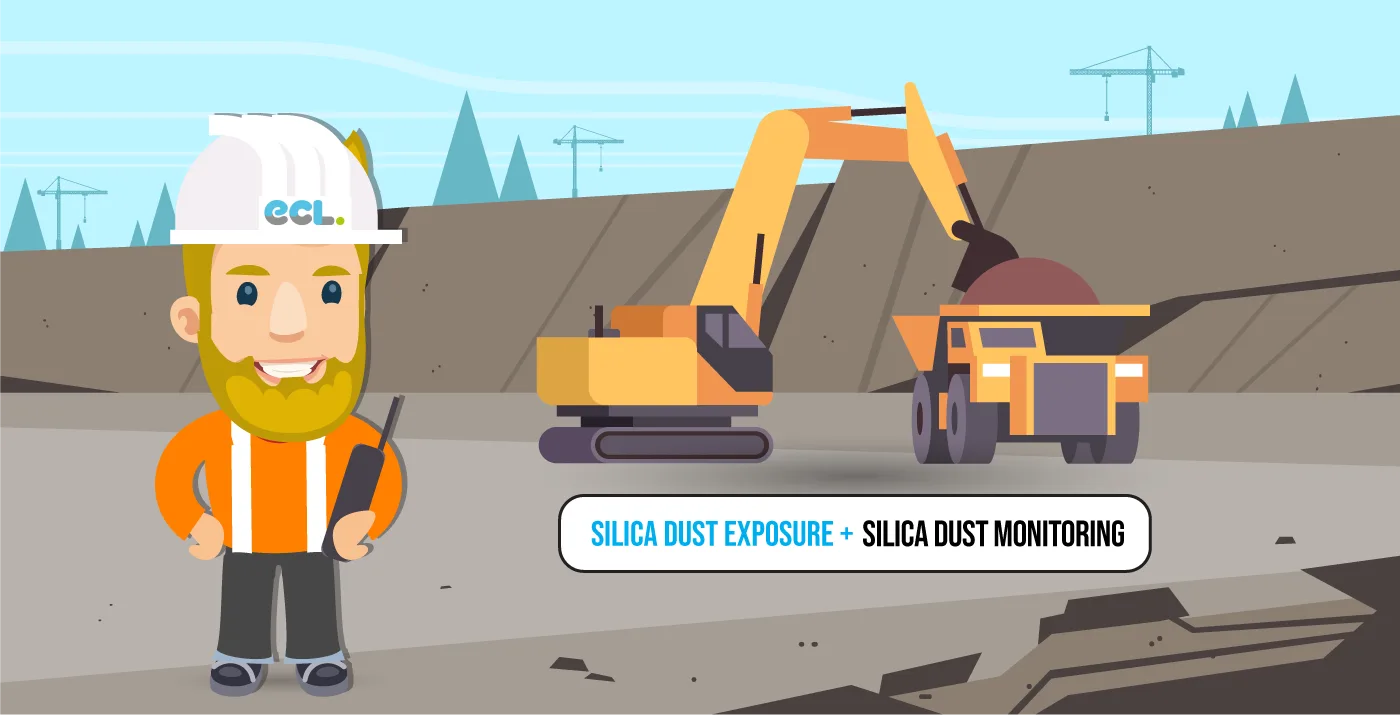In the construction industry, workers are often surrounded by dust, debris, and other airborne particles. Among the most dangerous of these is silica dust exposure, a hazard that many underestimate until it’s too late. Crystalline silica is found in materials like concrete, stone, and sand all common on job sites. When these materials are cut, drilled, or ground, fine silica particles are released into the air and easily inhaled.
Over time, these tiny particles can cause irreversible lung damage and other serious health problems. Awareness and prevention are crucial not only for individual workers but also for businesses aiming to maintain safe workplaces and avoid legal complications.
Why Silica Dust Exposure Is So Dangerous
Silica Dust Exposure can lead to several long term health conditions that may not show symptoms immediately. The particles are so fine that once inhaled, they lodge deep within the lungs, causing inflammation and scarring.
Common health risks associated with prolonged exposure include:
- Silicosis – a chronic lung disease caused by inhaling silica particles.
- Lung cancer – prolonged exposure significantly increases cancer risk.
- Chronic obstructive pulmonary disease (COPD) – progressive lung damage affecting breathing capacity.
- Kidney disease – linked to long-term silica inhalation in certain workers.
These illnesses are preventable, yet thousands of workers face them each year due to insufficient safety measures.
Industries Most at Risk
Although silica dust exposure is most often linked to construction sites, it also affects workers in several other sectors.
Common industries at risk include:
- Construction and demolition
- Mining and quarrying
- Masonry and concrete manufacturing
- Glass and ceramics production
- Foundry and metal casting
Employers across these industries have a responsibility to ensure protective measures are in place, including training, ventilation, and personal protective equipment (PPE).
Employer Responsibility and Legal Implications
Businesses have both a moral and legal obligation to protect workers from hazards like silica dust exposure. Occupational safety regulations require employers to limit exposure levels, provide appropriate safety gear, and educate workers on potential risks.
Failure to do so can result in severe consequences, including:
- Legal liability for worker illness or death
- Financial penalties for safety violations
- Reputational damage to the company
Investing in safety isn’t just about compliance it’s about protecting people and preserving trust within the organization.
Effective Strategies to Minimize Silica Dust Exposure
Preventing silica dust exposure requires consistent attention and a proactive safety strategy. Companies should integrate multiple control measures to reduce airborne dust and protect workers.
Some of the most effective prevention methods include:
- Use of wet cutting techniques: Keeping materials wet while cutting or drilling helps suppress dust before it spreads.
- Proper ventilation systems: Installing exhaust ventilation or air filtration systems in enclosed areas reduces airborne dust levels.
- Personal protective equipment: Workers should wear respirators and masks approved for silica dust protection.
- Regular monitoring: Conducting air quality assessments ensures exposure levels stay within legal limits.
- Employee training: Workers should understand the risks and know how to use protective equipment properly.
By adopting these preventive measures, businesses not only protect employees but also strengthen their overall safety culture.
Recognizing Symptoms Early
One of the challenges with silica dust exposure is that symptoms often appear years after the initial contact. Workers may dismiss early warning signs, thinking they’re minor issues. Recognizing these symptoms early can make a significant difference in long-term health outcomes.
Early symptoms may include:
- Persistent cough
- Shortness of breath during physical activity
- Fatigue or chest pain
- Weight loss or lack of appetite
If these symptoms occur, medical evaluation and screening are essential to identify potential lung damage. Businesses should encourage employees to undergo regular health check-ups to detect early signs of exposure related illness.
The Business Case for Prevention
From a business standpoint, preventing silica dust exposure is not only the right thing to do it’s also financially smart. Companies that invest in worker safety often see:
- Lower insurance costs
- Reduced absenteeism and turnover
- Higher productivity and employee morale
- Fewer legal disputes and compensation claims
Establishing strong safety standards and involving employees in hazard control programs also enhances a company’s reputation as a responsible employer.
Building a Culture of Safety
Creating a safe work environment requires more than rules it demands a shift in culture. Workers must feel empowered to report unsafe conditions without fear of retaliation. Supervisors and managers should lead by example, ensuring that safety protocols are consistently followed.
Key elements of a safety-driven culture include:
- Open communication between workers and management
- Regular safety meetings and refreshers
- Reward systems for maintaining safe practices
- Continuous review and improvement of safety programs
A workplace that prioritizes health and safety attracts skilled workers and builds lasting trust within the team.
Final Thoughts
Silica dust exposure may be an invisible threat, but its impact is undeniable. From devastating health consequences to financial losses, ignoring it can have long-term repercussions. Businesses that take the initiative to educate, protect, and monitor their workers demonstrate true leadership in safety and responsibility.
By combining awareness, regulation, and proactive prevention, companies can ensure that their workers return home healthy each day. Addressing silica dust exposure isn’t just about compliance it’s about care, commitment, and the shared goal of creating safer workplaces for everyone.

